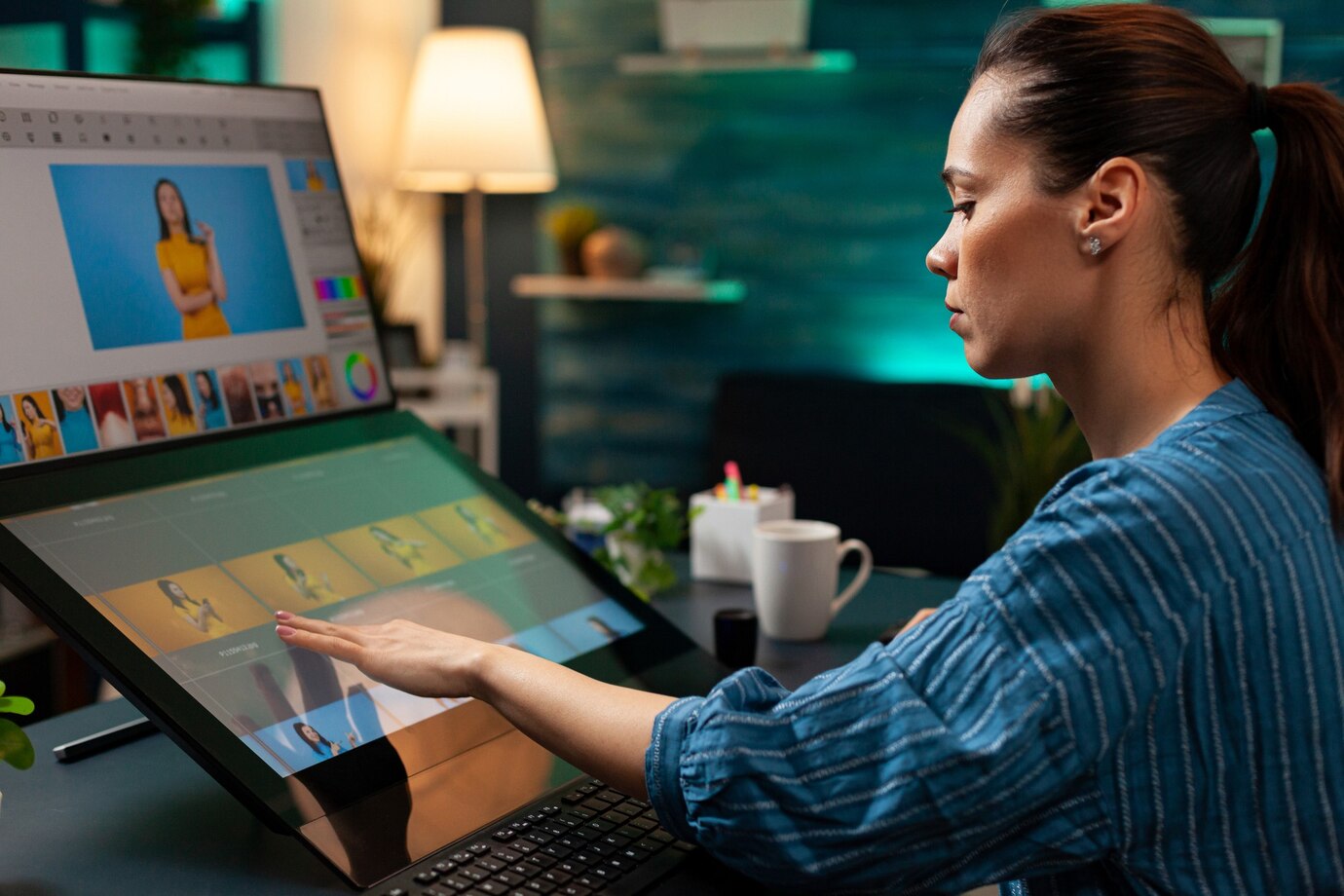Gone are the days of dusty darkrooms and pungent chemical baths. In the age of instant gratification, photo editing has undergone a revolutionary shift, migrating from physical workstations to the boundless realm of the internet. This rise of online photo editing has democratized image manipulation, making it accessible to anyone with a web browser and a modicum of creativity. But with great power comes great responsibility, and navigating the ever-evolving landscape of online editing tools can be daunting. Fear not, intrepid image enthusiast! This article will equip you with the essential knowledge to conquer the digital darkroom and transform your snapshots into stunning masterpieces.
The Evolution of Photo Editing
The evolution of photo editing is a fascinating journey that traverses the realms of both traditional and digital methodologies. Dating back to the early days of photography, the manipulation of images initially took place in darkrooms, where photographers employed chemical processes and manual techniques to enhance or alter their photographs. This analog era demanded a meticulous and skilled approach, as artists worked with physical negatives and prints to achieve desired effects.
The digital revolution in the latter half of the 20th century brought about a paradigm shift in the world of photography. With the advent of computers and digital imaging software, notably Adobe Photoshop, photo editing entered a new era of possibilities. Digital tools empowered photographers and graphic designers with unprecedented flexibility, allowing for non-destructive editing, layering, and a broad spectrum of creative adjustments. This marked a democratization of the art, as individuals with access to digital technology could experiment with and refine their visual creations.
As software applications evolved, so did the accessibility of photo editing tools. User-friendly interfaces emerged, making complex editing techniques more approachable for a broader audience. The transition from physical to digital editing also meant that mistakes were no longer irreversible, and experimentation became a fundamental part of the creative process.
In recent years, the emergence of online photo editing tools has further transformed the landscape. The internet has become a canvas for creativity, offering users the ability to edit images directly within their web browsers. This shift has eliminated the need for high-end software installations, enabling users to engage with photo editing tools without significant technical barriers. Online platforms such as Canva, Pixlr, and Fotor have gained popularity for their intuitive interfaces and diverse features, contributing to the democratization of photo editing on a global scale.
The transition from darkroom techniques to digital manipulation and, subsequently, to online platforms exemplifies the ever-changing nature of photo editing. Each phase of this evolution has not only expanded the possibilities for creative expression but has also made the art form more accessible to a wider audience, fostering a rich tapestry of visual storytelling in the digital age.
The Emergence of Online Photo Editing
The advent of online photo editing represents a paradigm shift in the way individuals approach image manipulation. Unlike traditional desktop applications that require installation and updates, online photo editing tools leverage the power of the internet, allowing users to edit their images directly through web browsers. This shift introduces a new level of convenience, accessibility, and collaboration.
One of the defining features of online photo editing tools is their user-friendly interfaces, which cater to a diverse audience ranging from casual enthusiasts to professional photographers. These platforms often provide intuitive drag-and-drop functionalities, making it easy for users to upload, edit, and save their images seamlessly. The elimination of complex installation processes broadens the user base, enabling individuals with varying levels of technical expertise to engage in creative photo editing.
Cloud-based storage is another key feature that sets online photo editing apart. By storing images on the cloud, users can access and continue their work from any device with an internet connection. This not only enhances the mobility of the editing process but also facilitates collaborative efforts, as multiple users can contribute to a project in real-time, regardless of their physical location. This collaborative aspect has become especially significant in the era of remote work and virtual collaboration.
The array of editing tools offered by online platforms is extensive, encompassing basic adjustments such as cropping, rotating, and resizing, as well as more advanced features like filters, overlays, and text options. These tools aim to cater to a wide range of creative needs, empowering users to enhance their images in diverse ways. Furthermore, the integration of social media sharing functionalities directly within these platforms streamlines the process of sharing edited images across various online platforms.
The advent of artificial intelligence (AI) and machine learning has further enriched the feature set of online photo editing tools. Some platforms employ AI algorithms to analyze images and suggest automatic enhancements, simplifying the editing process for users who may not be familiar with intricate adjustments. This trend reflects the continuous innovation within the industry, as developers leverage cutting-edge technologies to enhance user experiences and streamline workflows.
Industry Influences and Trends
The emergence of online photo editing tools has not only transformed individual and creative practices but has also had a profound impact on the photography and design industries. Several key influences and trends shape the trajectory of these tools within the broader professional context.
Industry Influences:
- Increased Accessibility: Online photo editing tools have democratized the field, providing access to image manipulation capabilities for individuals, photographers, and businesses worldwide. The ease of use and affordability of these tools have empowered a broader demographic to engage in professional-quality photo editing.
- Rise of Freelance and Gig Economy: The accessibility and collaborative features of online photo editing tools have facilitated the growth of freelance photographers and designers. Remote collaboration is now more seamless, allowing professionals to work on projects with clients regardless of geographical distances.
- Integration with Social Media: The integration of online photo editing tools with social media platforms has influenced content creation. Users can now edit and share their images directly on platforms like Instagram, Facebook, and Twitter, contributing to the visually-driven nature of online content.
Trends:
- Artificial Intelligence Integration: The incorporation of artificial intelligence (AI) and machine learning algorithms into online photo editing tools is a notable trend. AI-driven features analyze images to suggest enhancements, automate certain editing processes, and provide intelligent filters, catering to both beginners and professionals.
- Mobile Editing Dominance: With the rise of powerful smartphones, mobile photo editing has become a dominant trend. Online editing tools often offer mobile applications, enabling users to edit and share their photos seamlessly on-the-go, contributing to the popularity of mobile photography.
- Collaborative Editing: Collaboration is a growing trend in the industry, facilitated by the cloud-based nature of online photo editing tools. Multiple users can work on a project simultaneously, making collaborative editing a standard practice for both personal and professional projects.
| Influences | Trends |
| Increased Accessibility | Artificial Intelligence Integration |
| Rise of Freelance Economy | Mobile Editing Dominance |
| Integration with Social Media | Collaborative Editing |
- Global Accessibility: Online photo editing tools have expanded access to professional-quality editing tools globally, leveling the playing field for individuals and businesses irrespective of geographical location.
- Economic Empowerment: The rise of freelance opportunities and gig economy platforms has empowered photographers and designers to monetize their skills, creating new economic opportunities within the industry.
- Visual Content Proliferation: Integration with social media has accelerated the creation and sharing of visually appealing content, influencing trends and aesthetics across online platforms.




